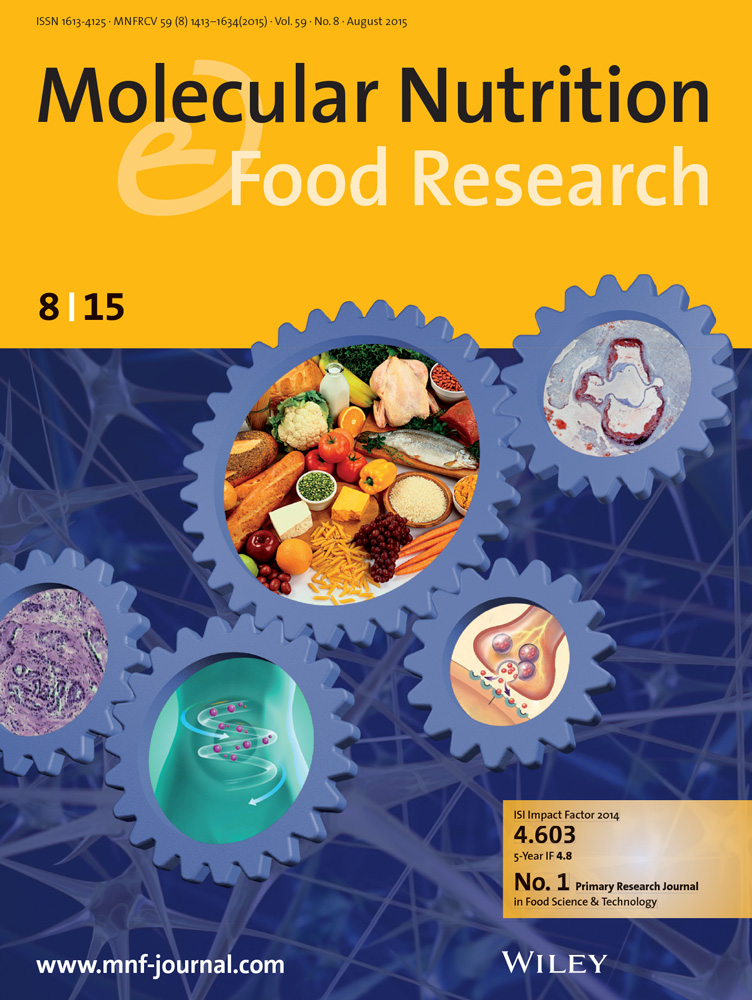脱落酸对mptp诱导的小鼠帕金森病的神经保护作用
IF 4.5
2区 农林科学
Q1 FOOD SCIENCE & TECHNOLOGY
引用次数: 0
摘要
帕金森病(PD)是仅次于阿尔茨海默病(AD)的第二大神经退行性疾病,神经炎症是其重要病因之一。到目前为止,还没有明确的证据表明药物可以改善PD的发病,因此寻找和开发有效的PD治疗药物至关重要。脱落酸(ABA)是一种结构和药用功能类似于PPAR-γ激动剂噻唑烷二酮类药物(TZDs)的植物激素。在多种炎症性疾病中均有治疗作用,但PD的作用和机制尚未明确。本研究旨在探讨ABA在MPTP(1-甲基-4-苯基-1,2,3,6-四氢吡啶)诱导的PD模型中的神经保护作用及其机制。在本研究中,我们观察到mptp诱导小鼠除了明显的行为异常外,炎症参数如离子钙结合接头分子1 (IBA-1)、胶质原纤维酸蛋白(GFAP)、肿瘤坏死因子(TNF-α)、白细胞介素-1β (IL-1β)和白细胞介素-6 (IL-6)也在黑质致密部(SNpc)显著升高。在mptp诱导的小鼠中,ABA治疗恢复了行为异常,并显著降低了这些炎症参数。有趣的是,这些作用与硫氨酸合成酶c样蛋白2 (LANCL2)的激活无关,但与过氧化物酶体增殖物激活受体γ (PPAR-γ)的调节有关。腹腔注射ABA可改善mptp诱导的PPAR-γ和过氧化物酶体增殖物激活受体共激活物-1α (PGC-1α)表达的增加。我们的研究结果表明,腹腔注射ABA对MPTP诱导的神经退行性变具有神经保护作用,这种作用与下调神经炎症和调节PPAR-γ和PGC-1α的表达有关。这些结果表明,ABA有望成为帕金森病的治疗候选药物。本文章由计算机程序翻译,如有差异,请以英文原文为准。

Neuroprotective Effect of Abscisic Acid on MPTP-Induced Parkinson's Disease in Mice
Parkinson's disease (PD) is the second largest neurodegenerative disease after Alzheimer's disease (AD), and neuroinflammation is one of its important causes. So far, there is no clear evidence that drugs can improve the onset of PD, so it is crucial to find and develop effective drugs for PD treatment. Abscisic acid (ABA) is a phytohormone with structural and medicinal functions similar to the PPAR-γ agonist thiazolidinedione drugs (TZDs). It has played therapeutic effects in a variety of inflammatory diseases, but the role and mechanism of PD have not been defined. The present study aimed to gain insight into the neuroprotection effects and mechanism of ABA in MPTP (1-methyl-4-phenyl-1,2,3,6-tetrahydropyridine)-induced PD models. In this study, we observed that in addition to significant behavioral abnormalities in MPTP-induced mice, Inflammatory parameters such as ion calcium-binding adaptor molecule 1 (IBA-1), glial fibrillary acid protein (GFAP), tumor necrosis factor (TNF-α), interleukin-1β (IL-1β), and interleukin-6 (IL-6) were also significantly increased in substantia nigra pars compacta (SNpc). ABA treatment restored behavioral abnormalities and significantly reduced these inflammatory parameters in MPTP-induced mice. Interestingly, these effects were not related to the activation of the lanthionine synthetase C-like protein 2 (LANCL2) but were related to the regulation of the peroxisome proliferator-activated receptor gamma (PPAR-γ). Intraperitoneal injection of ABA ameliorated the MPTP-induced increase in PPAR-γ and peroxisome proliferator-activated receptor co-activator-1α (PGC-1α) expression. Our findings suggest that intraperitoneal injection of ABA is neuroprotective against neurodegeneration induced by MPTP, and this effect is associated with the downregulation of neuroinflammation and modulation of the expression of PPAR-γ and PGC-1α. These results suggest that ABA is expected to develop as a therapeutic candidate for PD.
求助全文
通过发布文献求助,成功后即可免费获取论文全文。
去求助
来源期刊

Molecular Nutrition & Food Research
工程技术-食品科技
CiteScore
8.70
自引率
1.90%
发文量
250
审稿时长
1.7 months
期刊介绍:
Molecular Nutrition & Food Research is a primary research journal devoted to health, safety and all aspects of molecular nutrition such as nutritional biochemistry, nutrigenomics and metabolomics aiming to link the information arising from related disciplines:
Bioactivity: Nutritional and medical effects of food constituents including bioavailability and kinetics.
Immunology: Understanding the interactions of food and the immune system.
Microbiology: Food spoilage, food pathogens, chemical and physical approaches of fermented foods and novel microbial processes.
Chemistry: Isolation and analysis of bioactive food ingredients while considering environmental aspects.
 求助内容:
求助内容: 应助结果提醒方式:
应助结果提醒方式:


